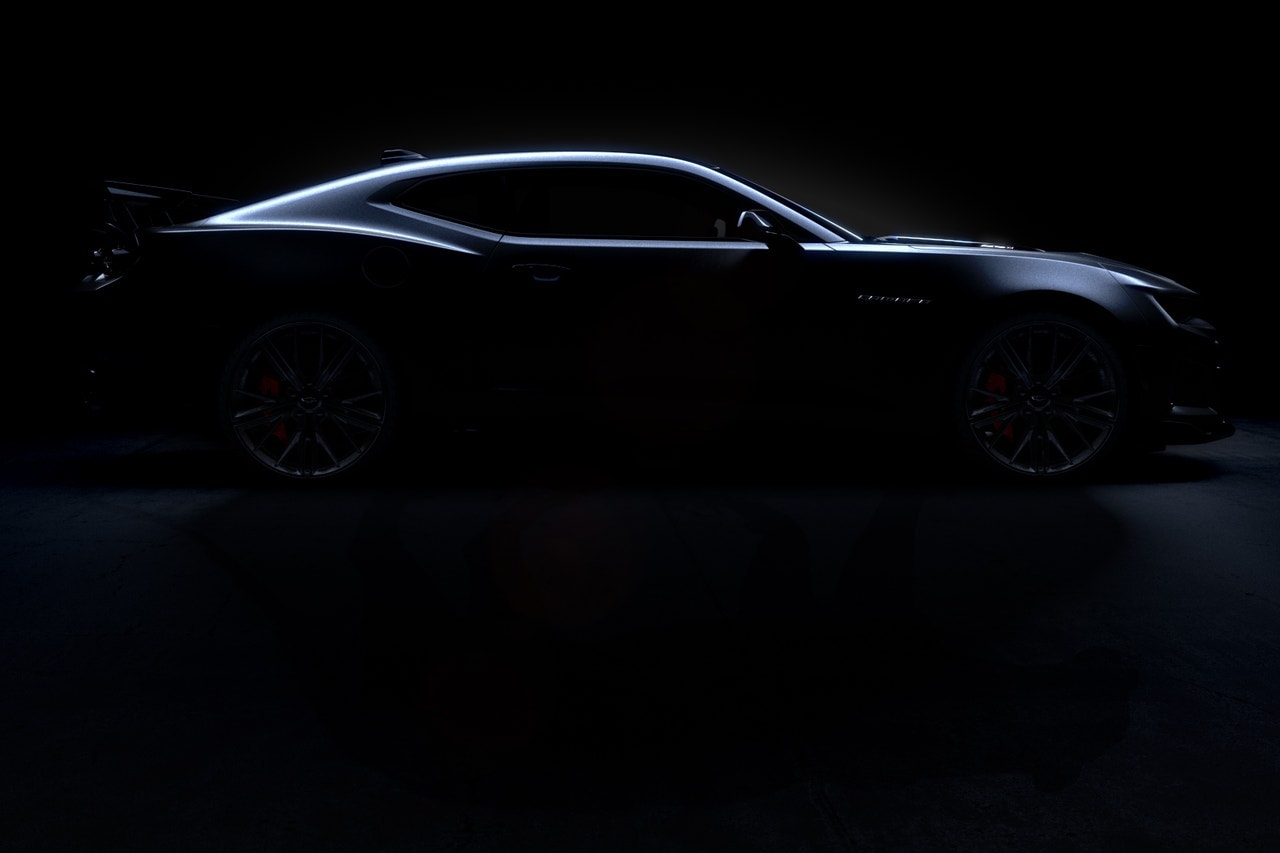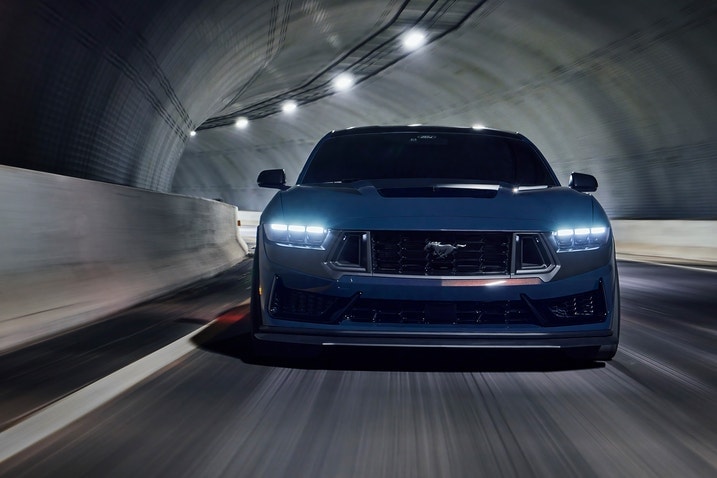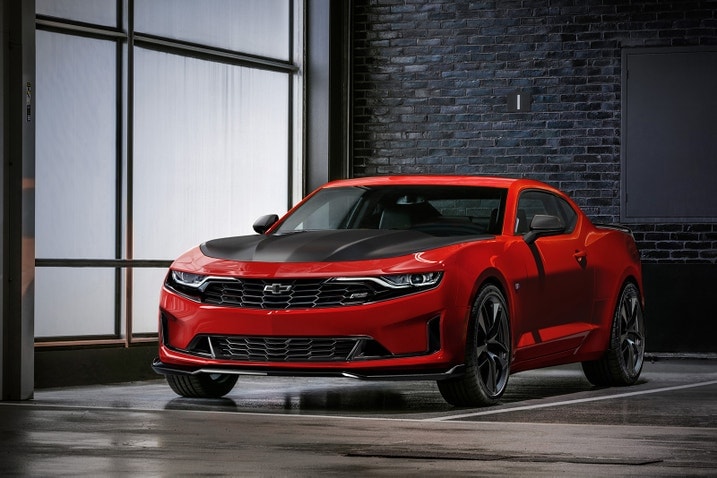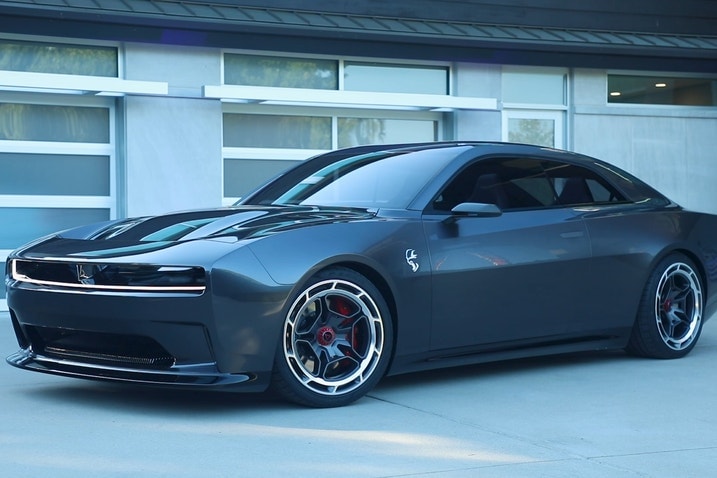- Ford will take the V8 Mustang into the future with the new S650 generation pony car.
- Chevrolet's Camaro faces an unknown fate as production ends in January 2024.
- Dodge takes muscle electric with the Dodge Daytona SRT Concept.
State Of the Muscle Car: Where Will America’s Car Go From Here?
The muscle car isn't dead, but it is changing. Here's what's next for the three biggest names in muscle.
There’s a very strong and convincing argument to be made that the car most emblematic of the United States of America is the SUV — the bigger the better. But it wasn't always that way. For a time it was the humble station wagon. A symbol of family people doing family things everywhere. But above both of those in the hierarchy of automobiles that can be considered truly American rests the muscle car.
What that vehicle class has come to mean in 2023 is about as clear as a Floridian beach after spring break. Right now, the muscle car is all over the place. For literal generations, three cars have stood out from the crowd. The Ford Mustang, the Dodge Challenger and the Chevy Camaro have been duking it out for muscle car supremacy for years — though Ford has really been the only one winning. With the sixth-generation Camaro all but dead and the Charger/Challenger headed for electrification in the not too distant future, now feels like the right time to take stock of the state of the muscle car and what its future will hold.
The Ford Mustang
Let’s start with the reigning champ — the Mustang (mostly because its nameplate has survived for almost 60 years on the trot with only small gaps in its résumé). Ford doesn’t even call it a muscle car anymore. Its own press materials use the term “sports car.” At least, Ford did so when it announced the Mustang was the world’s best-selling sports car over the last decade combined. Make no mistake, the Mustang wasn't an out-and-out sports car until the S550-generation Shelby GT350 came out.
Still, an American-made V8-powered, rear-wheel-drive two-door coupe is the epitome of the muscle car formula. So, how exactly is the Mustang doing? Well, the latest-generation S650 just debuted, indicating that Ford has planned a long life for the V8 Mustang and its siblings. On top of that, Ford has rolled out a new trim, the Dark Horse, which brings an even harder edge to the muscle-sports car. The Dark Horse’s 500-horsepower 5.0 liter V8 is the cream of the Mustang crop, and we’re sure it’ll be a hit with fans.
Clearly, a financial case for the Mustang brand to exist is still present, especially with the Mach-E around. That is, after all, usually what kills off cars like this. It’s either that or emissions, and now Ford builds more than enough hybrids and electric vehicles to make room for its V8-powered muscle car. Sales of the Mustang globally are also rising in accordance with sales figures at home. For now, the money makes sense and the Mustang survives, strong and healthy.
2020 Chevrolet Camaro.
The Chevrolet Camaro
Another third of the muscle car trinity isn’t faring as well. Chevy has announced that sixth-generation Camaro production is ending in January 2024 and no real replacement has yet been announced. “While we are not announcing an immediate successor today, rest assured, this is not the end of Camaro’s story,” said Scott Bell, VP, Global Chevrolet.
The Camaro has long trailed the Mustang and the Challenger, at least from a sales perspective. In 2022, Chevy sold just under 25,000 Camaros. Ford essentially doubled that figure, and Dodge came out on top, selling 80,000 of its Charger and Challenger siblings.
Things weren’t always that way. People couldn’t get enough of the revived Camaro. However, a 2019 refresh turned the once handsome sixth-gen Camaro into something so universally derided that sales declined precipitously. But Chevy wasn't about to spend any more money fixing something that was already dying on the vine. The Camaro's fate was sealed. That isn’t to say the Camaro was a bad muscle car — it might be the best-driving of the three mentioned here. Some versions reached well past 600 horsepower and the car has maintained a small but loyal following throughout its life.
It’s basically impossible to know what’s next for the Camaro. Some rumors point to a high-powered electric sedan. Some say the Camaro will never return. For right now, however, axing the Camaro does make sense. Upcoming electric vehicle legislation and current incentives could push Chevy to electrification, and it’s possible the brand is simply biding its time to see what is in store from both Dodge and Ford. One thing’s for sure: The future of the Camaro isn’t very bright right now and we won't be seeing much of it in the short term.
The Dodge Challenger (and Charger)
Three paths have emerged for the three muscle car kings of America. Ford is set to continue as-is for at least the next several years. The Mustang is popular enough to do so. Chevy is headed off into the unknown — or the great beyond — with the Camaro, and electrification can’t be ruled out. Dodge, then, is on the middle path. Its muscle car will continue on like Ford’s, but electrification is a certainty.
The Challenger and its sedan counterpart, the Charger, have proven to be massively popular. In the eyes of some, the two are the last “true” muscle cars — with more power than sense and hilarious names like Demon and Hellcat adorning the most powerful models. Dodge has certainly worked hard to cultivate that image. While the brand has killed the Charger and Challenger as we know them, and likely the Hemi V8 along with them, Dodge has made it clear what’s coming next.
This year, it unveiled the Dodge Charger Daytona Concept. It previews the future of the muscle car from Dodge’s point of view. The concept launched as a high-powered, all-wheel-drive electric coupe with multiple power output levels depending on trim. It's likely we’ll see a similar structure emerge when the Daytona Concept’s production-ready version debuts. Given how fleshed-out the trim hierarchies and technical details are, we’re willing to bet this is how the Charger and Challenger will be carried into the future.
Where does the muscle go from here?
The muscle car segment is scattered to the wind and most signs point to electrification. Rumors of a hybridized Mustang are still floating around the internet. Dodge, for its part, is charging headfirst into the electrified future, while Chevy has cast doubt on the future of the Camaro. It’s impossible to know what the muscle car will look like in 20 years, but we have a pretty good indication of what the next 10 will look like, and they’ll certainly be very different from what we had just a few years ago.
Edmunds says
The muscle car is something so emblematic of America, it's hard to imagine the auto industry without them. Thankfully, at least two cars — the Mustang and the Challenger's successor — will carry the torch. It's hard to say what is next for the Camaro — all we know is we don't want it gone for too long.




 by
by